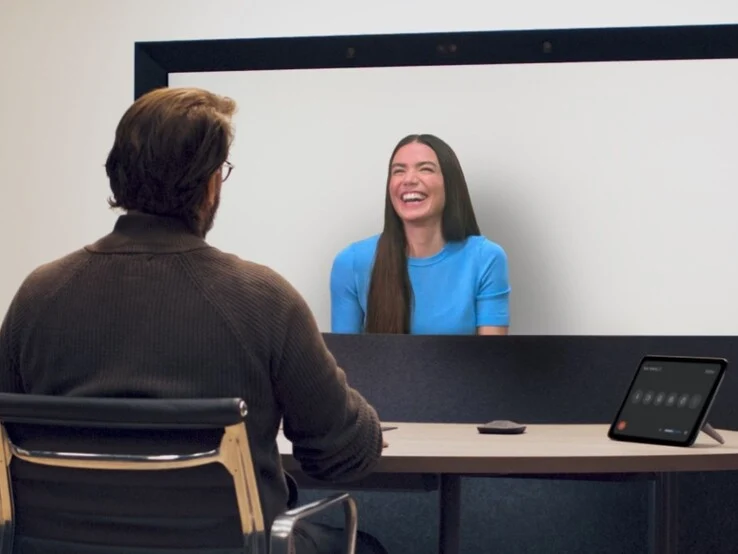Key Takeaways
1. Google introduced Beam, a 3D video calling system that simulates in-person conversations without the need for headsets or glasses, building on Project Starline.
2. Beam uses advanced technology, including six high-definition cameras, light-field rendering, and head tracking at 60 frames per second, to create lifelike video calls.
3. The system maintains eye contact, recognizes gestures, and captures facial expressions, enhancing the sense of presence during calls.
4. Beam features real-time AI translation, supporting multiple languages while preserving the speaker’s tone and voice, initially available for English and Spanish.
5. Google plans to collaborate with HP to launch Beam by late 2025, targeting both business and broader communication uses, with integration into Google Meet and other services.
At the I/O 2025 event, Google introduced Beam, a cutting-edge 3D video calling system made to mimic in-person conversations without needing any headsets or glasses. This platform is the result of the earlier Project Starline.
Origins of Beam
Project Starline was a trial telepresence initiative that Google launched in 2021, aimed at creating realistic, 3D video calls that would give the impression that the person on the other end was actually in the same room with you.
Building on the ideas of Project Starline, Beam merges AI-powered depth sensing technology with a compact light field display to produce lifelike, volumetric images of participants during calls in real time.
Advanced Technology
Beam is equipped with six high-definition cameras, light-field rendering, and precise head tracking that operates at an impressive 60 frames per second, all to create a genuine sense of presence. This technology enables users to maintain eye contact, recognize gestures, and understand facial expressions, all while avoiding the discomfort of headsets.
The initial model was quite large and cumbersome, but Beam has now been streamlined into a sleeker, market-ready product. Google is collaborating with HP to launch it by late 2025, with early adopters including Salesforce, Deloitte, and Duolingo.
Exciting Features
A notable new feature of Beam is its real-time AI translation. This is powered by Google’s Gemini models, allowing individuals to converse in various languages while keeping the unique tone and voice of the speaker. Currently, it supports English and Spanish, with plans to add Italian, German, and Portuguese soon. Google has also mentioned that this technology will be integrated into Google Meet to enhance collaboration across language differences.
Sundar Pichai, the CEO of Google, stated that Beam is part of the company’s larger effort to make remote communication feel more intuitive and natural. Google aims to connect it with services like Zoom and eventually expand its use beyond just business settings.
Source:
Link



Leave a Reply